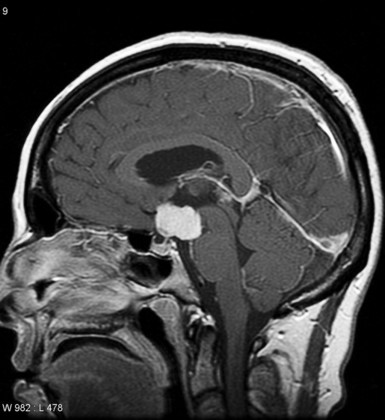Represents 5-10% of cases of brain tumors during childhood: it is a benign epithelial tumor derived from embryonic remnants of the Rathke's pouch: it is usually cystic and contains crystals of cholesterol. Because of its suprasellar position, it results in endocrine (growth arrest, diabetes insipidus), ocular (amblyopia, hemianopsia) and cerebral symptoms (intracranial hypertension with headaches). X-Rays: enlarged or destroyed sella turcica, sometimes intracystic calcifications.
Surgical excision is difficult and, in case of partial ablation or recurrence, radiotherapy is necessary: a full endocrinologic evaluation, to exclude panhypopituitarism, should be performed in the pre-and postoperative periods to establish the optimal substitution opotherapy. The survival rate is very high, but sequelae can be important (especially extreme obesity) in 40 % of cases.

Anesthetic implications:
surgery by (nasal) transphenoidal route or by trepanation; check the endocrine status; risk of diabetes insipidus in the postoperative period.
References :
- Muller HL.
Childhood craniopharyngioma: current controversies on management in diagnostics, treatment and follow-up.
Expert Rev Neurother 2010; 10:515-24.
Updated: September 2017